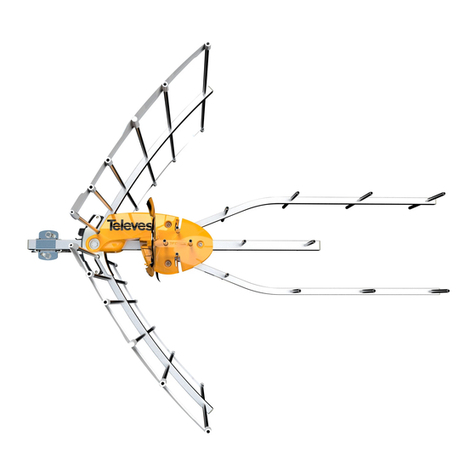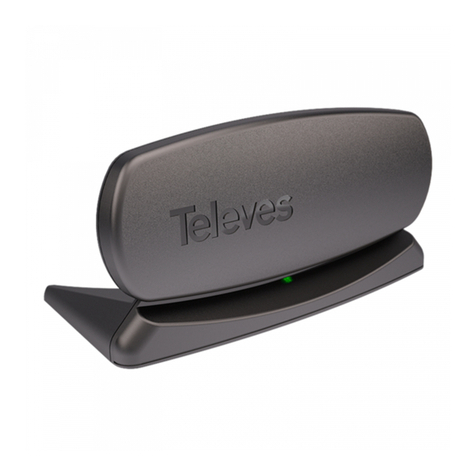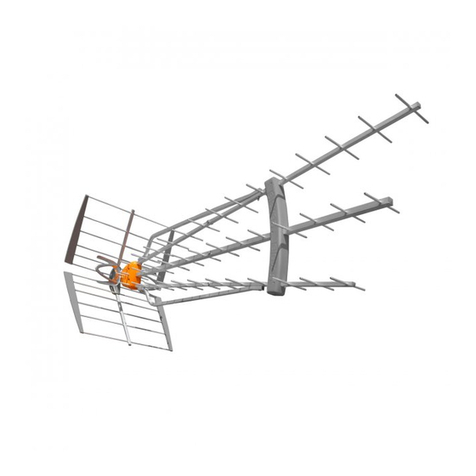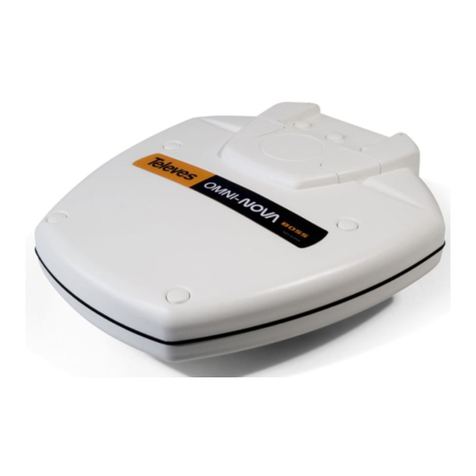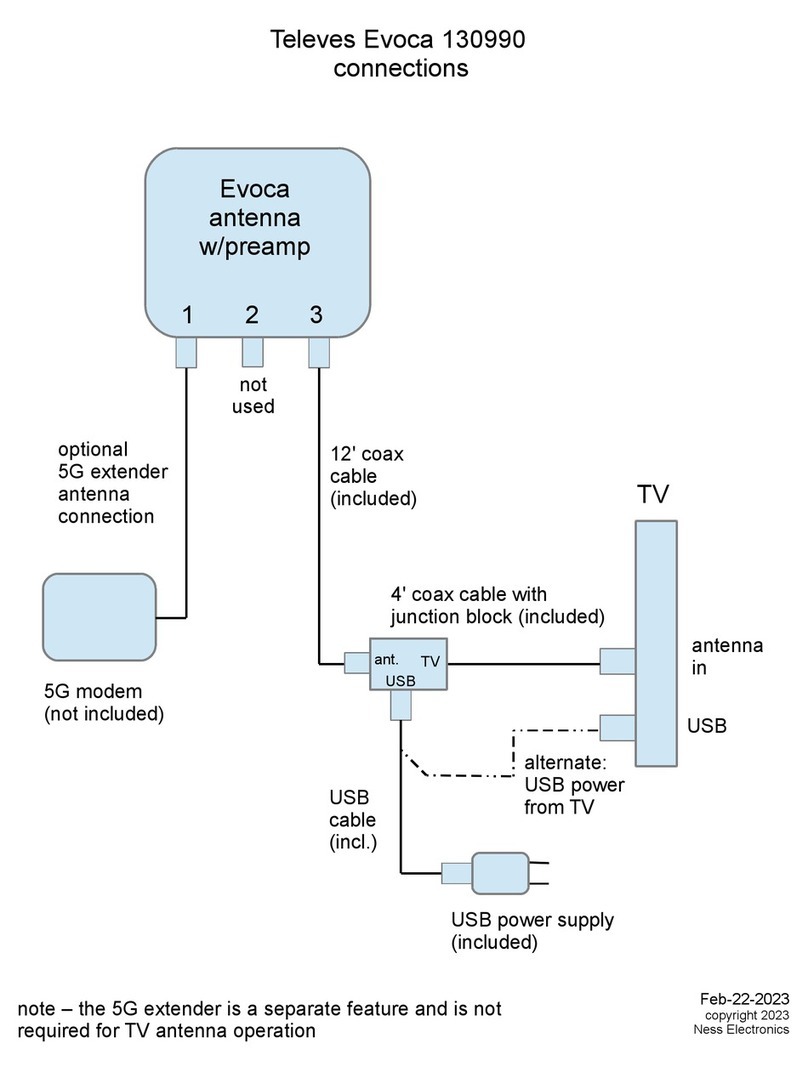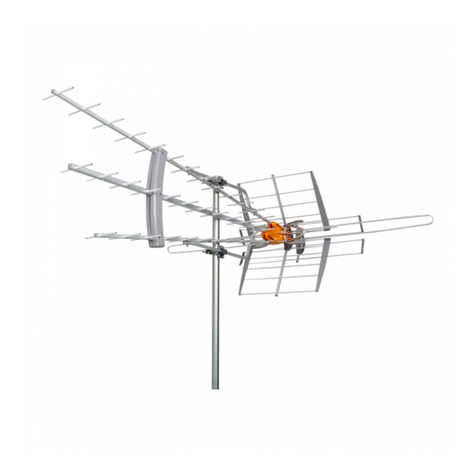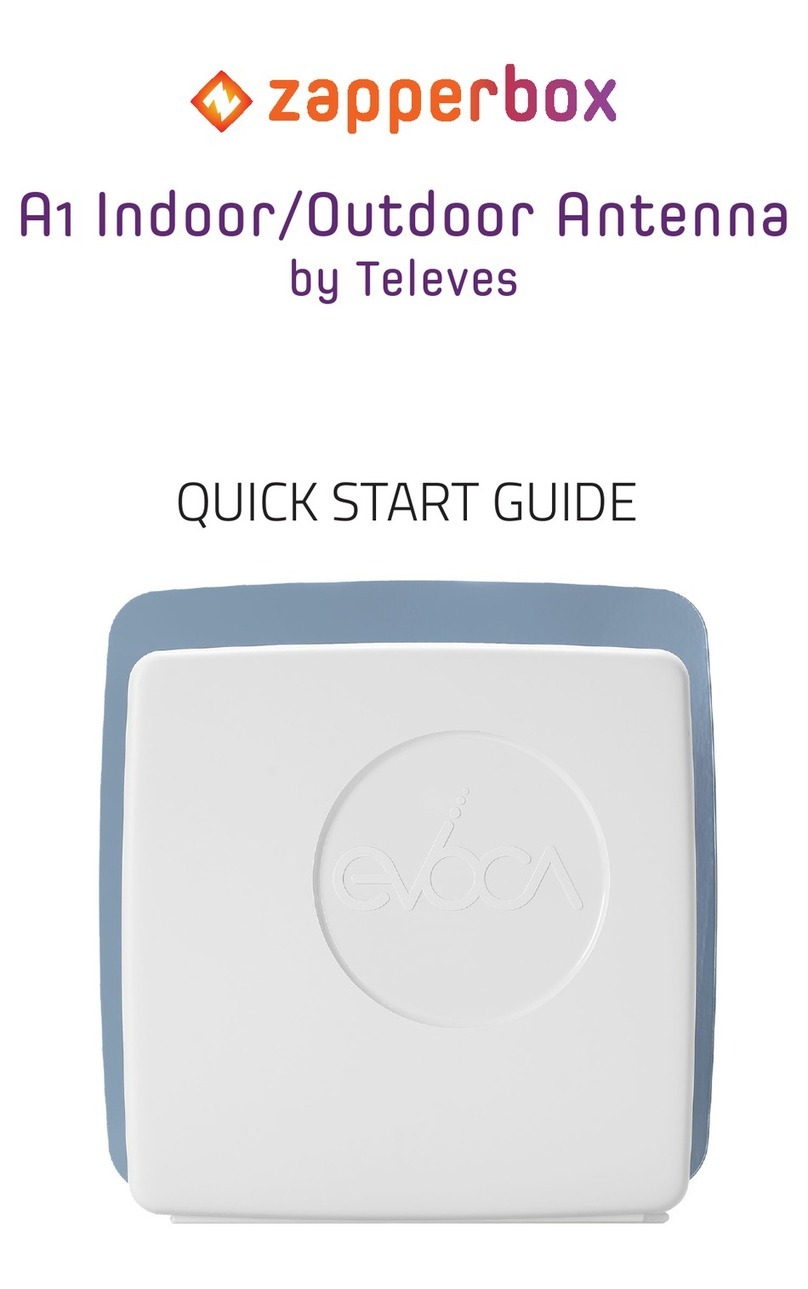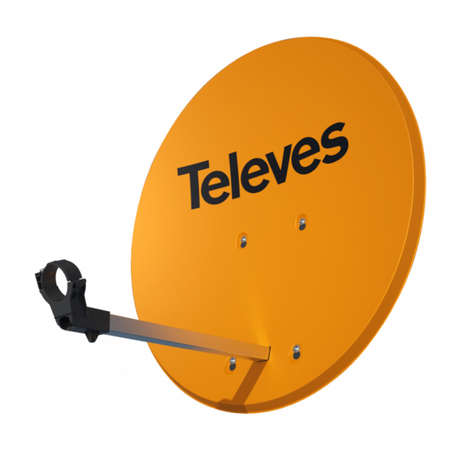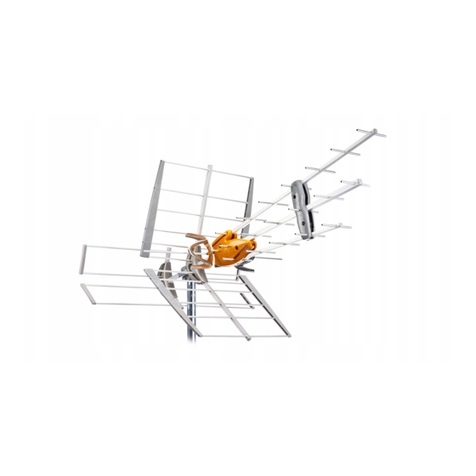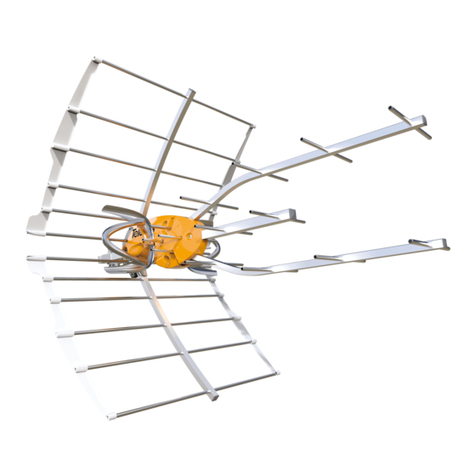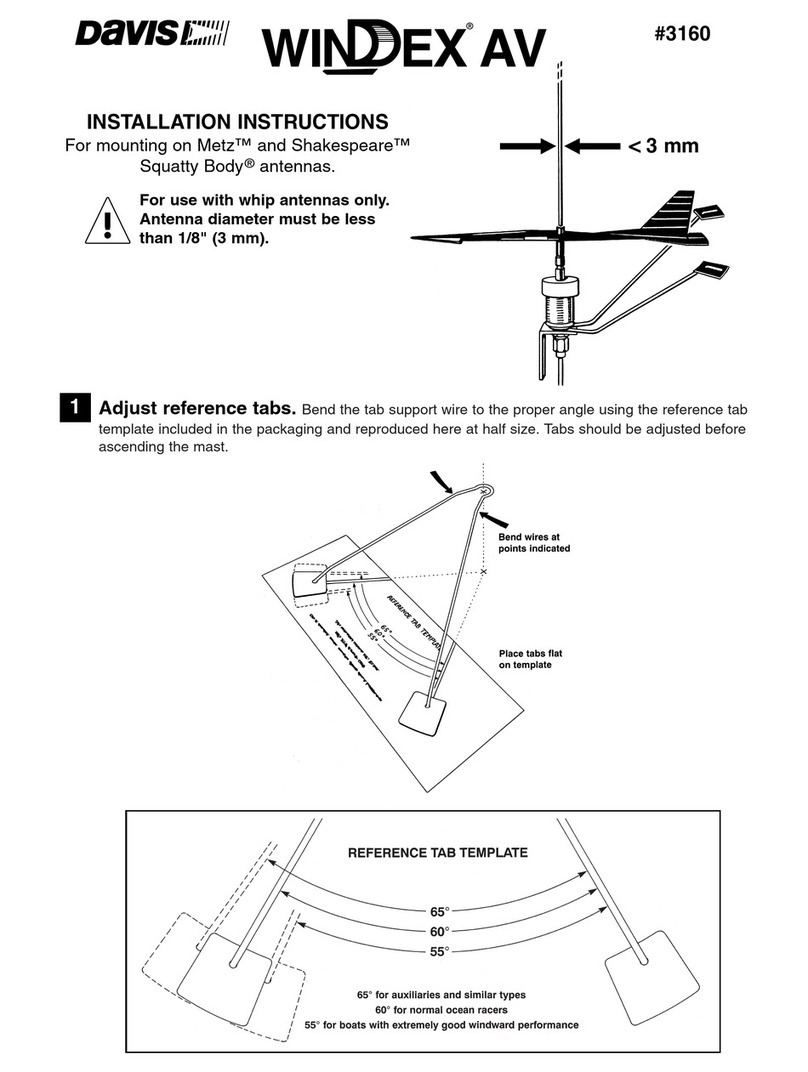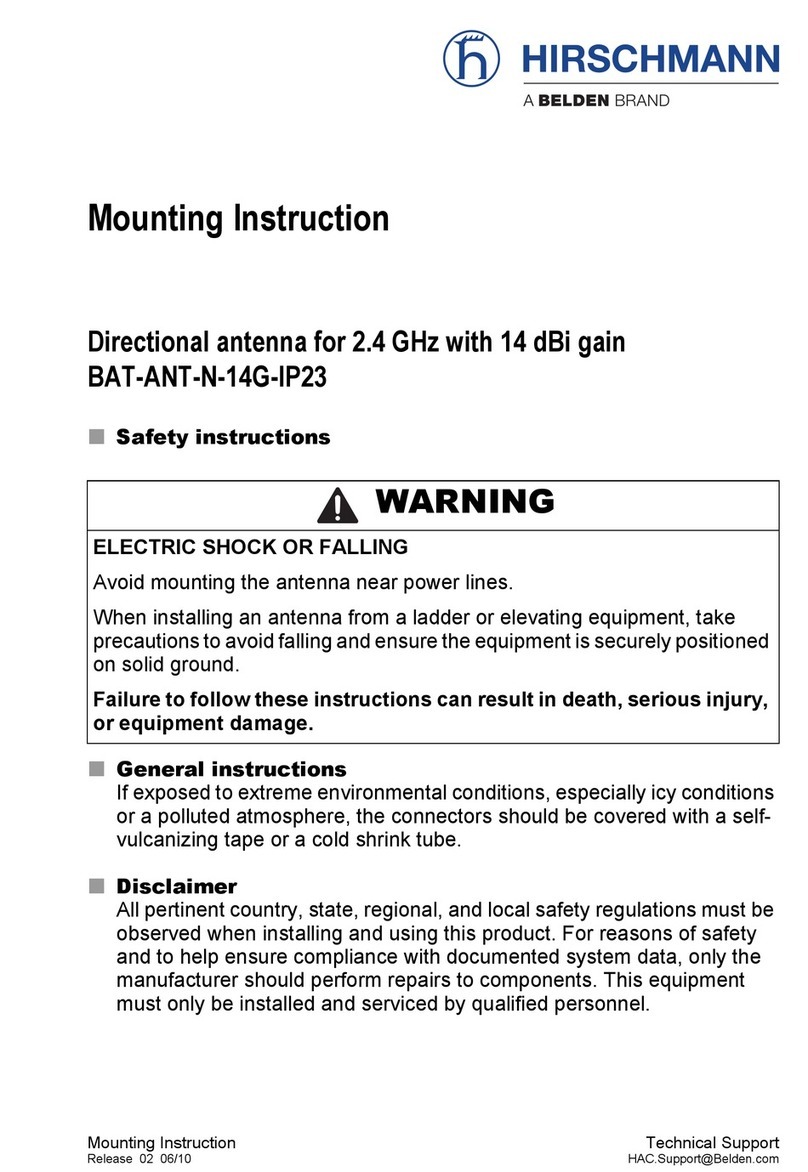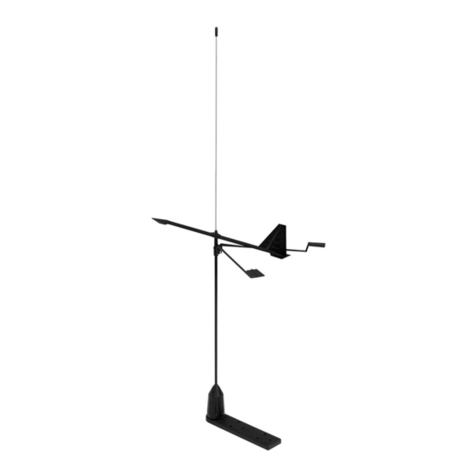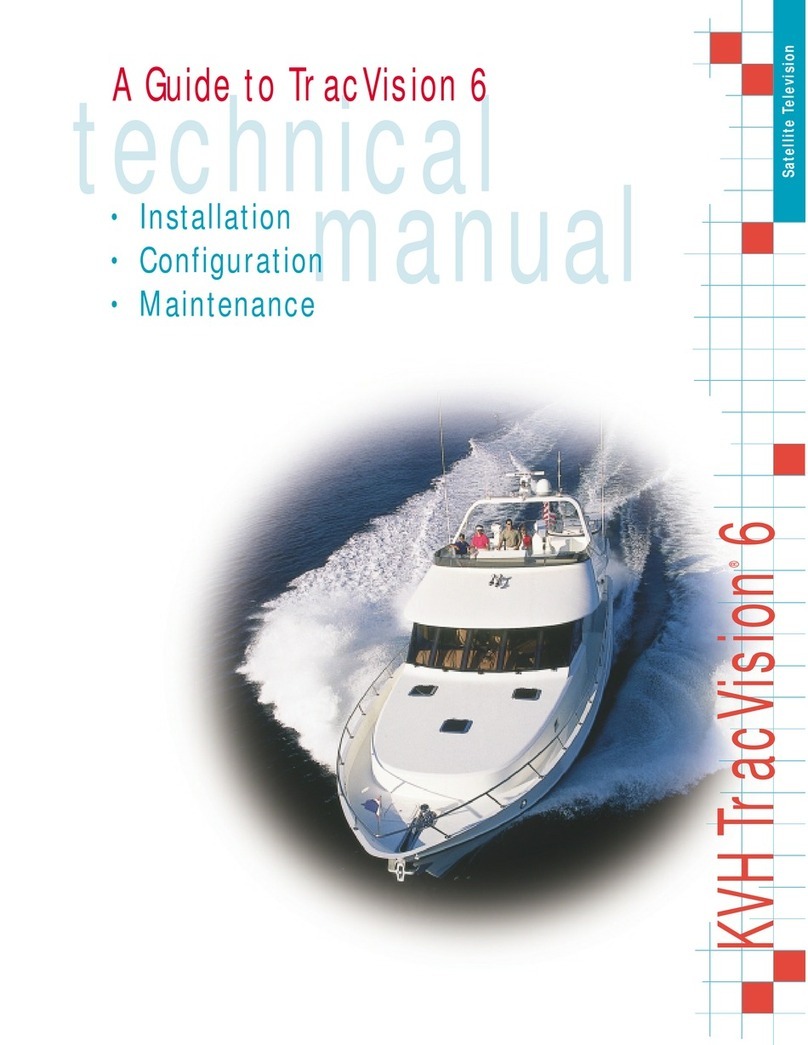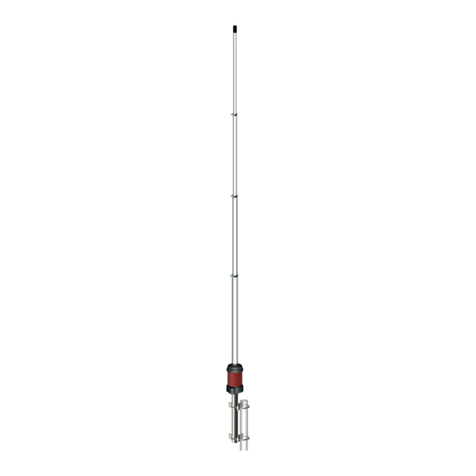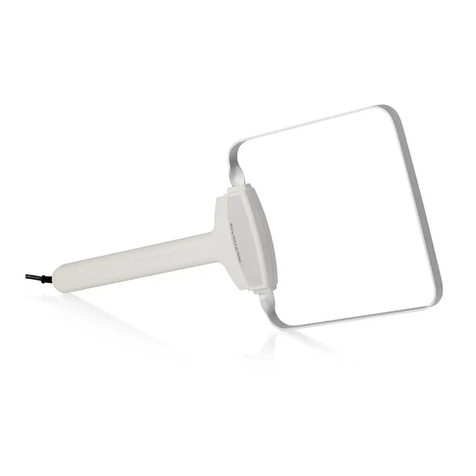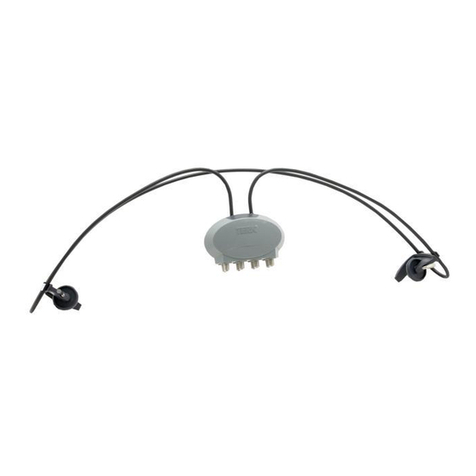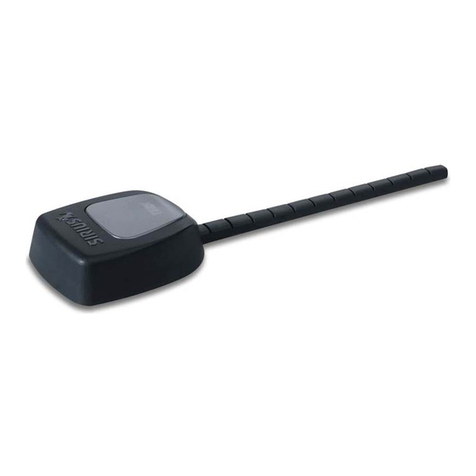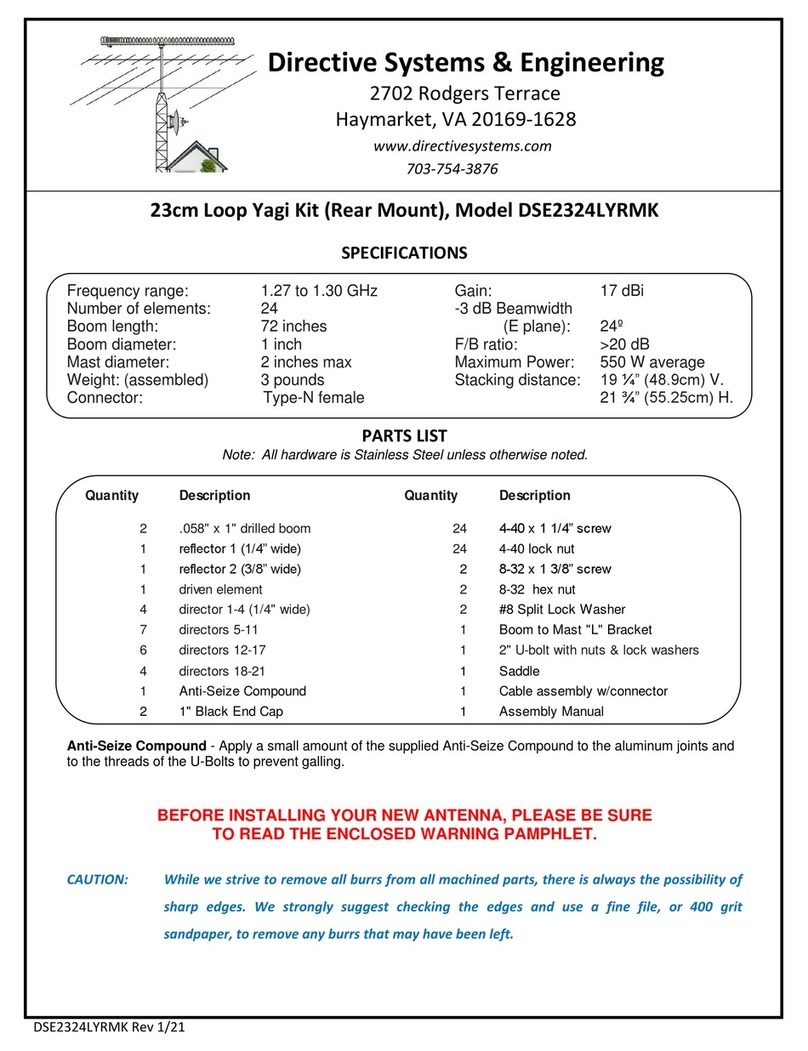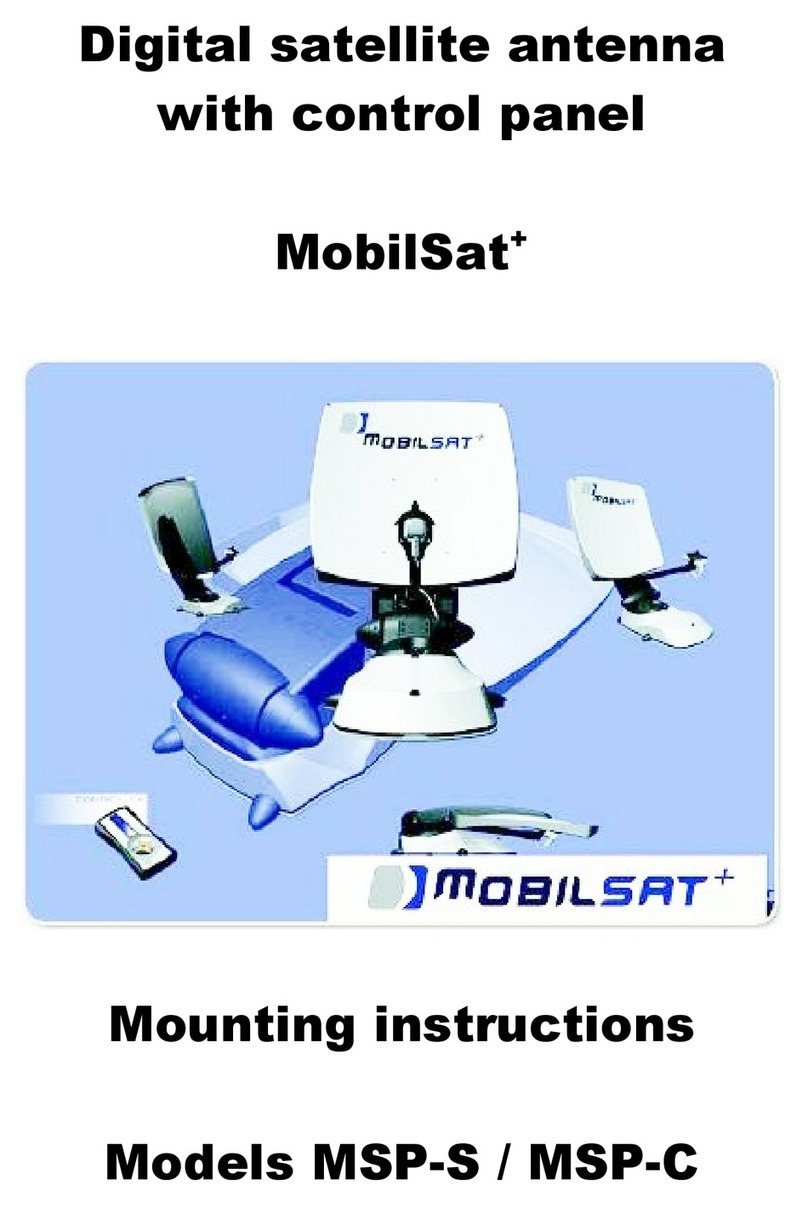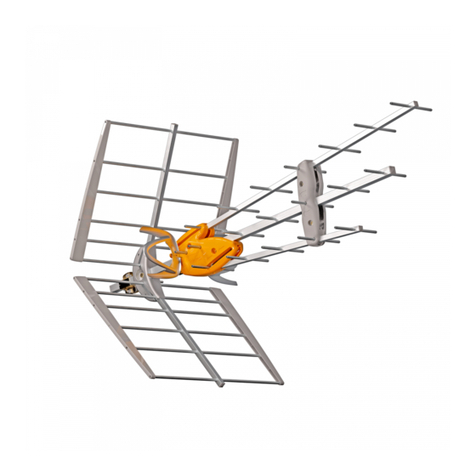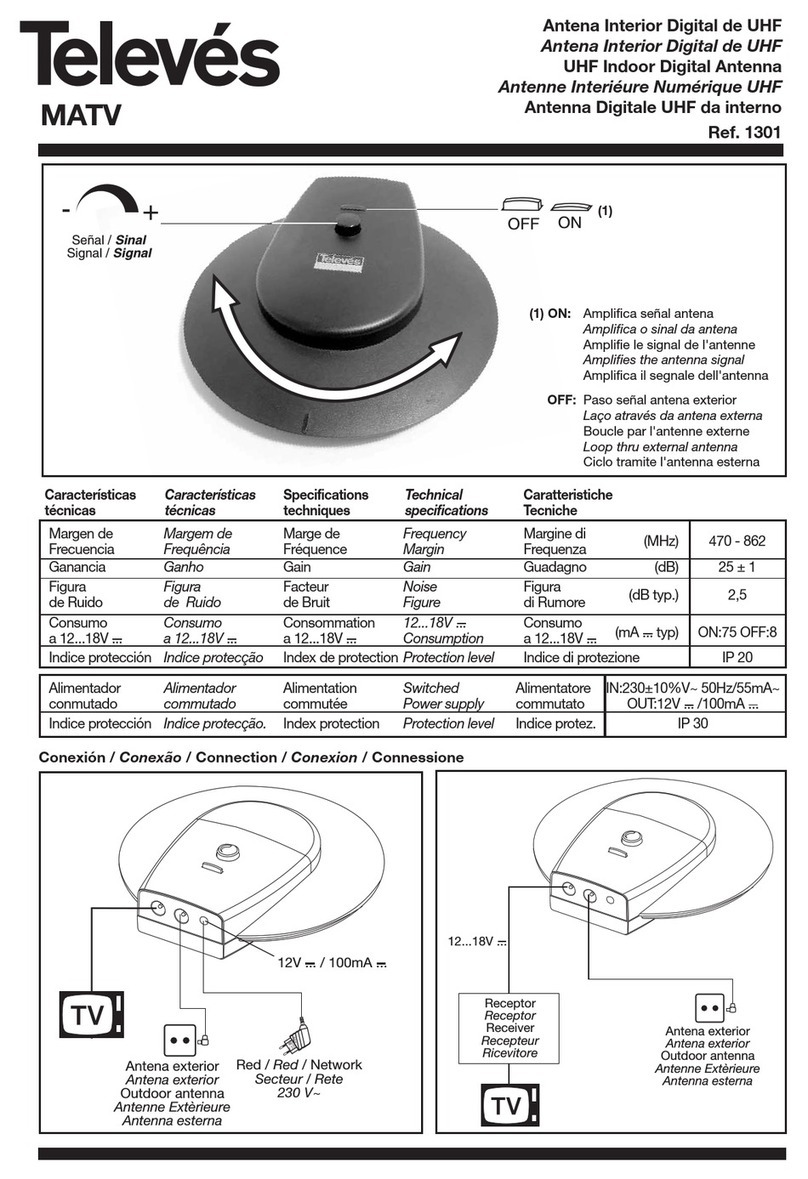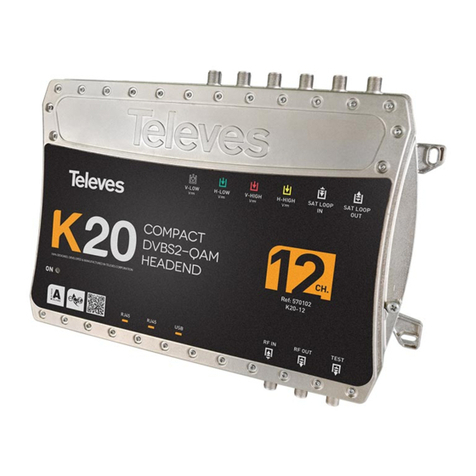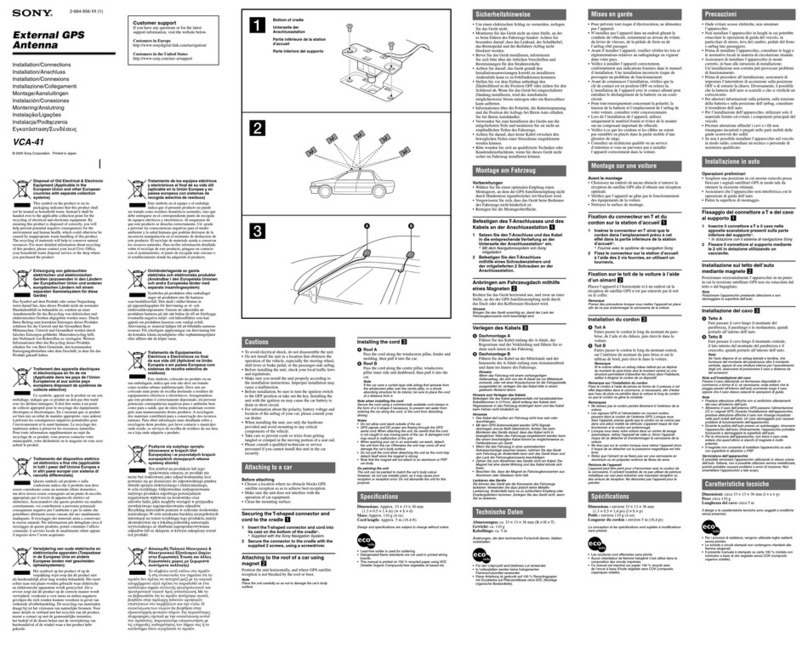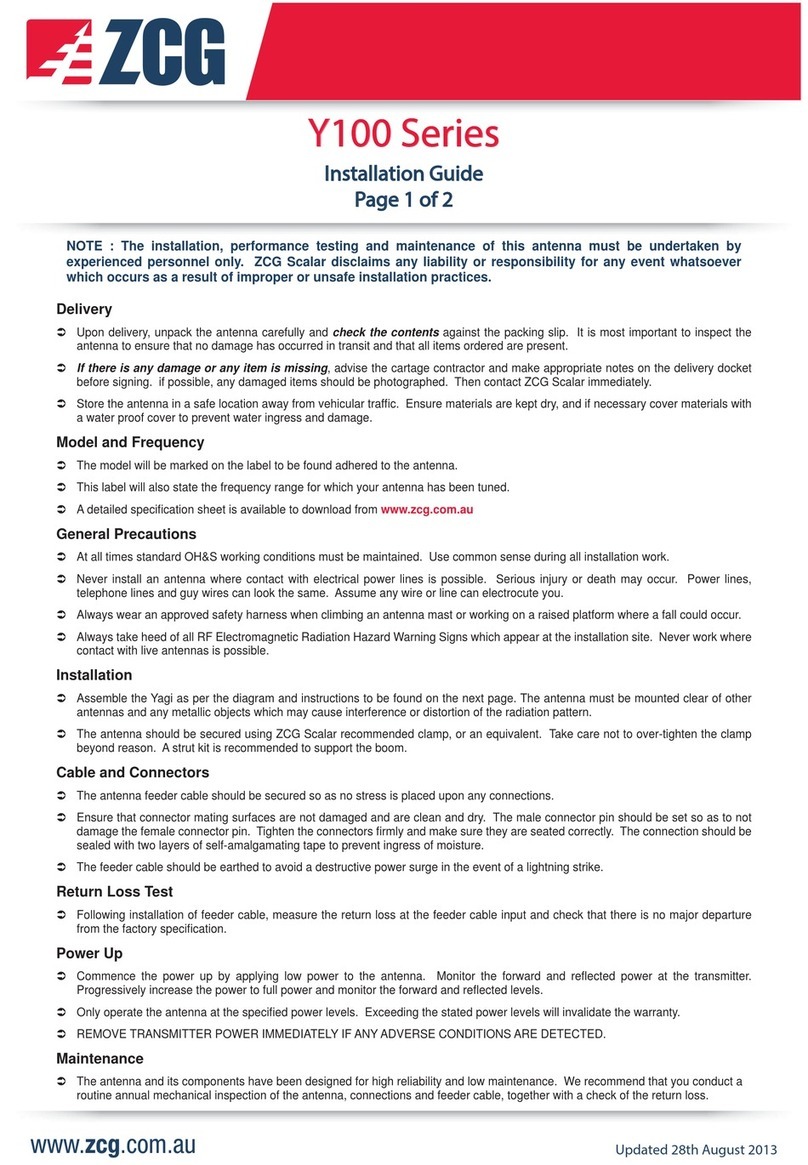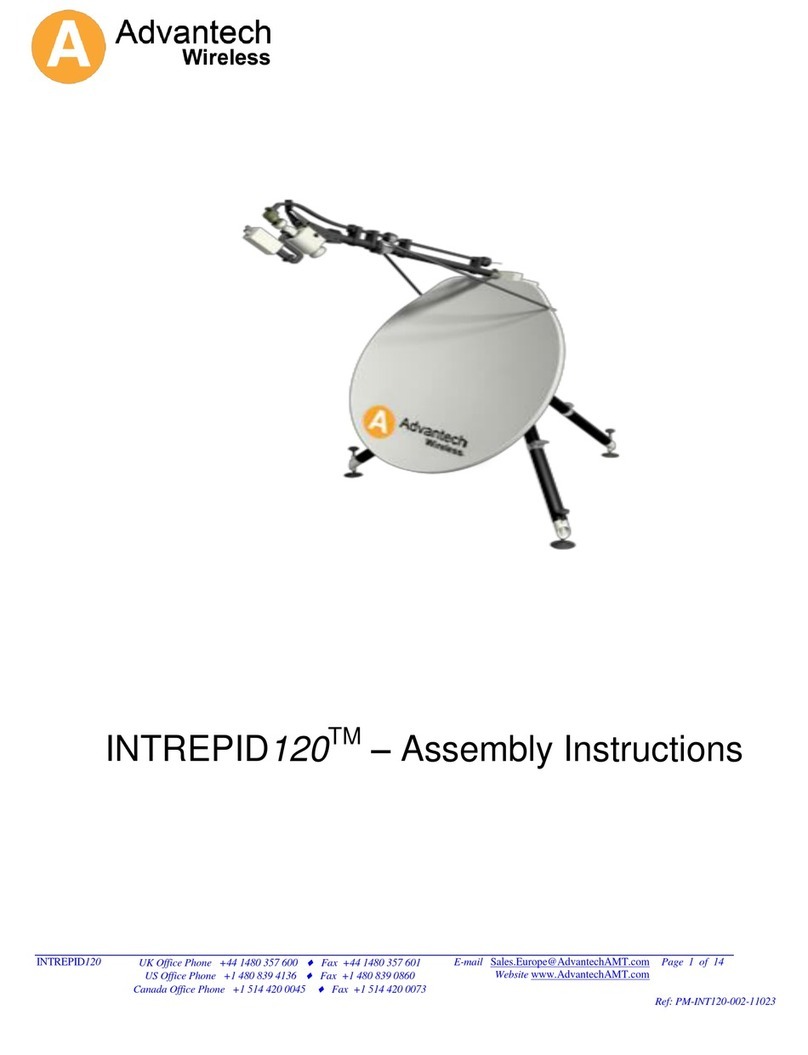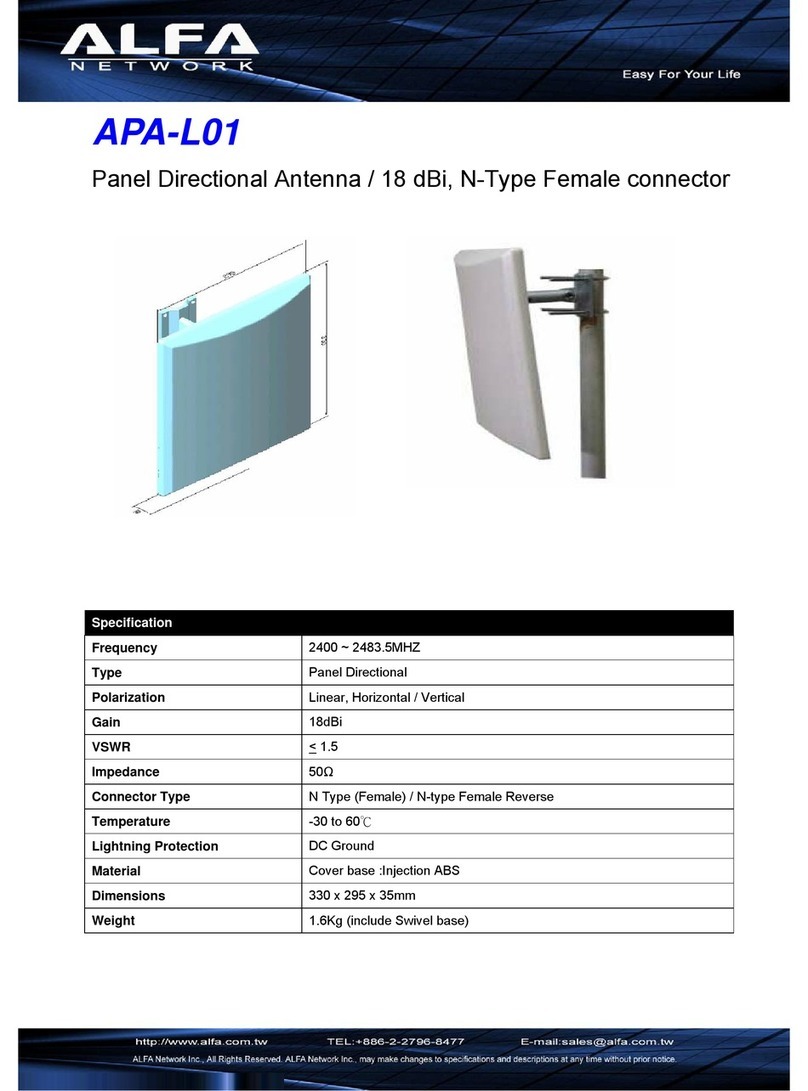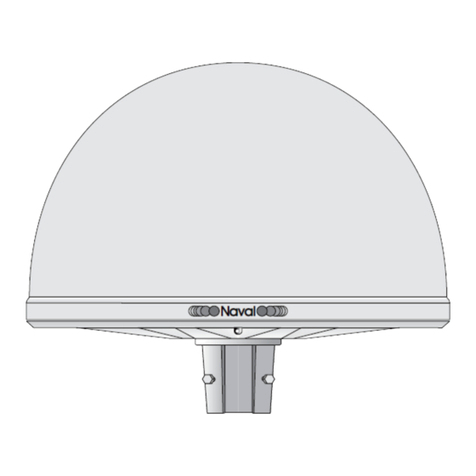
Troubleshooting / Resolución de problemas
Issue / Problema Possible Cause / Posible causa Solutions / Solución
Non functioning.
Funcionamiento incorrecto o
no funcionamiento.
Is unit plugged into working outlet?
¿Hay tensión de red?
Check electrical installation.
Revisar la instalación eléctrica.
No picture or sound.
No hay imagen ni sonido.
Is the TV tuned to an actual existing channel?
¿Es correcto el programa del receptor?
Tune the TV set to an existing local TV channel.
Programar el canal correctamente en su televisor.
Check installation cable and connectors for short circuit conditions.
Revisar la instalación de cable y conectores por si hubiese un cortocircuito.
Check DC voltage at the PSU’s antenna connector.
Comprobar que hay tensión continua en la entrada de antena de la fuente de alimentación.
Poor picture quality.
Mala calidad de imagen.
Is there a good line of sight to the transmitter?
¿Hay obstáculos entre la antena y el reemisor?
Remove obstacles and/or reassess antenna location.
Eliminar los obstáculos y/o reconsiderar el emplazamiento de la antena.
Adjust direction of antenna.
Reorientar la antena.
Safety Instructions:
LIGHTNING PROTECTION
If installed outdoors, be sure the antenna system is grounded so as to provide
protection against voltage surges and built-up static charges. Section 810 of the
National Electrical Code ANSI/NFPA70, or CSA C22.1 sections 10, 16, and 54, of the
Canadian Electrical Code, provide information with respect to proper grounding
of the mast and supporting structure, grounding of the antenna lead-in wire to
an antenna discharge unit, size of grounding conductors, location of antenna-
discharge unit, connection to grounding electrodes, and requirements for the
grounding electrode (see gure and instructions).
Mount the lightning arrestor or 75 ohm coaxial grounding block as close as possible
to where the 75 ohm coaxial cable downlead enters the house.
The ground wires for both the mast and the downlead should be copper or
aluminum wire, number eight (8) or larger.
The downlead wire from the antenna to the lightning arrestor and the mast ground
wire should be secured to the house, spaced from four (4) to six (6) feet apart.
In the case of a “ground up”antenna installation it may not be necessary to ground
the mast if the mast extends four or more feet in the earth. Consult a licensed
electrician for the proper depth in your location.
WARNINGS
To prevent re or shock hazard, do not expose the included power supply to rain
or moisture.
Installation of o-air antennas near power lines is dangerous. For your safety, follow
the installation instructions.
Any alteration or modication to the product or usage not in accordance with
product instructions voids the warranty.
Antenna Lead
in Wire
Example of antenna grounding as per
National Electrical Code, ANSI/NFPA 70
NEC - National Electrical Code
Ground
clamp
Electric Service
Equipment
Ground clamps
Power service Grounding Electrode System
(NEC Art 250, Part H)
Antenna Discharge Unit
(NEC Section 810-20)
(May substitute a 75 ohm
Coax Grounding Block)
Grounding Conductors
(NEC Section 810-21)
Instrucciones de seguridad:
PROTECCIÓN CONTRA RAYOS/DESCARGAS
Si la instalación es exterior, asegúrese de que el sistema esté conectado a tierra para la
protección contra descargas eléctricas exteriores y descargas de estática interiores. La
sección 810 del Código Eléctrico Nacional ANSI/NFPA70, o CSA C22.1 secciones 10, 16,
y 54, del Código Eléctrico Canadiense, proporcionan información respecto a la puesta
a tierra del mástil y de la estructura de soporte, puesta a tierra del cableado de la ante-
na, interconexión de cables hacia unidades de descarga, tamaño de las líneas de tierra,
ubicación de las unidades de descarga, conexión hacia electrodos de puesta a tierra y
requerimientos de estos electrodos (ver gura e instrucciones).
Montar una unidad de descarga o carga coaxial de 75 Ohms tan cerca de la entrada del
cable coaxial en la vivienda como sea posible.
Utilizar alambre de cobre o aluminio de calibre ocho (8) o superior para las líneas de
tierra tanto del mástil como del cable de bajada.
El cable de bajada de la antena a la unidad de descarga y la línea de descarga del mástil
deben estar asegurados a la casa, separados entre si de 1,2 a 1,8 m.
Cuando el mástil se instala directamente sobre tierra alcanzando una profundidad de
cuatro (4) o más pies en el terreno puede no ser necesaria una línea de masa. Consulte
a un instalador especializado para conocer el dato exacto correspondiente a su zona.
ADVERTENCIAS
Para reducir el riesgo de fuego o choque eléctrico, no exponer la fuente de alimentación
a la lluvia o a la humedad.
Es peligroso instalar antenas terrestres cerca de líneas de alta tensión. Extreme la pre-
caución y siga las instrucciones.
La modicación o alteración del producto o su utilización para un n distinto a aquel
para el que fue diseñado invalida toda garantía.
Cable de entrada
desde la antena
Ejemplo de puesta a tierra de una antena
de acuerdo al Código Eléctrico Nacional, ANSI/NFPA 70
NEC - Código Eléctrico Nacional
Abrazadera de
puesta a tierra
Equipo de
servicio
eléctrico
Abrazaderas de puesta a tierra
Sistema de electrodos para puesta a tierra
del servicio eléctrico (NEC Art. 250, Parte H)
Unidad de descarga
para antena
(NEC Sección 810-20)
Conductores de
puesta a tierra
(NEC Sección 810-21)
This equipment has been tested and found to comply with the limits for a Class
B digital device, pursuant to part 15 of the FCC Rules. These limits are designed
to provide reasonable protection against harmful interference in a residential
installation. This equipment generates, uses and can radiate radio frequency
energy and, if not installed and used in accordance with the instructions, may
cause harmful interference to radio communications. However, there is no
guarantee that interference will not occur in a particular installation. If this
equipment does cause harmful interference to radio or television reception,
which can be determined by turning the equipment o and on, the user is
encouraged to try to correct the interference by one or more of the following
measures:
- Reorient or relocate the receiving antenna.
- Increase the separation between the equipment and receiver.
- Connect the equipment into an outlet on a circuit dierent from that to which
the receiver is connected.
- Consult the dealer or an experienced radio/TV technician for help.

